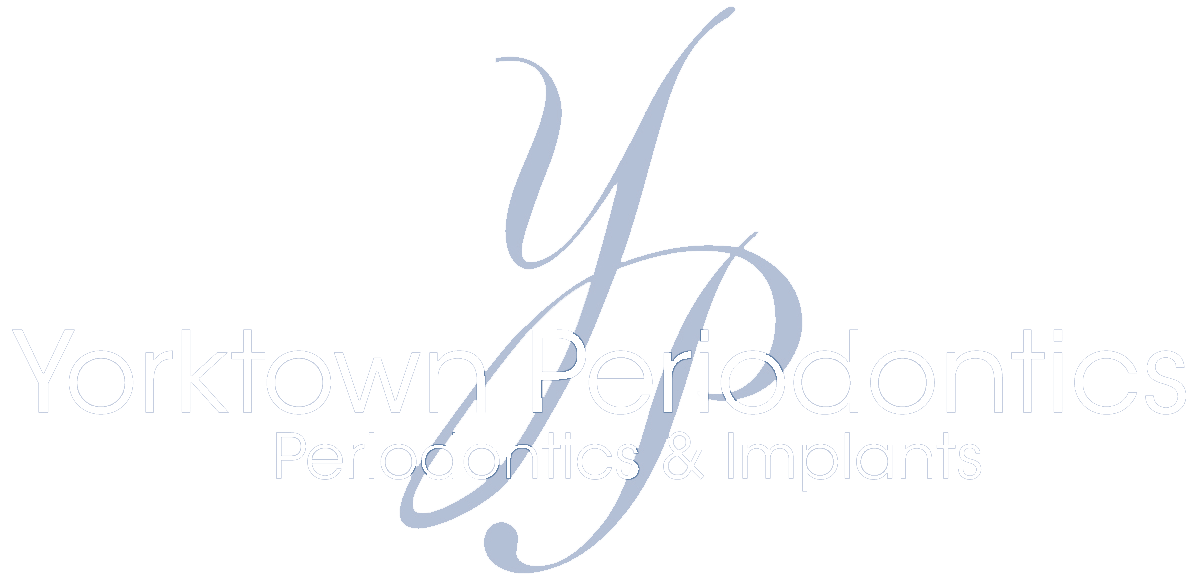The American Academy of Periodontology calls periodontists the “plastic surgeons of dentistry.” The purpose of most periodontal plastic surgeries is to restore form and function to the gum tissue, periodontal ligament, and the bone that supports your teeth. Aesthetic periodontal procedures can also greatly enhance the appearance of your smile.
Dr. Sayward E. Duggan offers a broad range of periodontal plastic surgery procedures. She loves to see her procedures transform smiles, and ultimately, the patients that wear them.
Below are several of the most common periodontal plastic surgeries.
Gum Graft
Gum grafting is a common periodontal procedure performed at our office. Some of the most common types of gum grafting are:
• Free gingival graft – This procedure is often used to thicken gum tissue. A layer of tissue is removed from the palate and relocated to the area affected by gum recession. Both sites heal quickly and without causing any permanent damage.
• Subepithelial connective tissue graft- This procedure is commonly used to cover exposed roots. Tissue is removed fairly painlessly from the outer layer of the palate and relocated to the site of gum recession. The surface tissue is less intact, resulting in significantly less discomfort.
• Acellular dermal matrix allograft- This procedure uses medically-processed donated human tissue as a source for the graft. With this procedure there is no need for a donor site from the patient’s palate, which means less pain and discomfort for the patient. Our periodontal practice uses BioHorizons AlloDerm as a source of tissue for this type of graft.
Some of the benefits of gum grafting surgery include:
• Reduced sensitivity – Gum grafting surgery can cover an exposed tooth root, reducing discomfort, and restoring health to the gums.
• Improved appearance – Periodontal disease is characterized by gum recession and inflammation. Gum recession and root exposure can make the teeth look longer than normal and the smile to appear “toothy.” Gum grafting can make the teeth look shorter, and more symmetrical.
• Improved gum health – Gum grafting can help halt tissue and bone loss, preventing further problems and protecting exposed roots from further decay.
Bone Graft
Bone grafting is an excellent way to replace lost bone tissue and encourage natural bone growth. Modern bone grafting procedures make dental implant treatment possible in cases that otherwise wouldn’t have been just a few years ago.
There most common types of dental bone grafting are:
• Autogenous bone graft – In this type of graft, the bone is removed from elsewhere in the body and implanted in the mouth. Common donor sites for bone grafting include the chin and the posterior third molar areas of the jaw.
• Allograft – Bone from a bone bank (cadaver bone) can be used in the bone grafting procedure. An allograft is very safe and has been successfully used for many years.
• Xenograft – Bone from bovine (cow) bone. A xenograft is perfectly safe and has been used successfully for many years.
The most common reasons for bone grafting include:
• Dental implants – Implants are the preferred replacement method for missing teeth. If the jawbone lacks the necessary quality or quantity of bone, bone grafting can strengthen and thicken the implant site.
• Sinus lift – A sinus lift entails elevating the sinus membrane and grafting bone onto the sinus floor so that implants can be securely placed.
• Ridge augmentation – The bone graft is used to fill in the ridge and make the jawbone a uniform shape.
Dental Crown Lengthening
Crown lengthening can be used to alter the appearance of a “gummy” smile or uneven gum line. If you feel that your teeth look too short, or your gums cover too much of some teeth, dental crown lengthening may be a solution for you.
For this procedure we remove excess gum tissue to expose more of the tooth crown. Dr. Duggan can then sculpt your gum line to give you an even, healthier smile.
If you have questions or would like to request an appointment, please contact us today!

